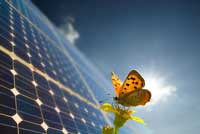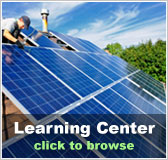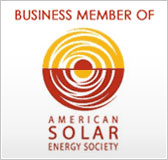
Solar
energy comes in many forms. The most familiar form is that of solar
cells, but there are actually many other different ways to create and
store solar energy. Here are a few of those ways:
•Solar Cells – These have frequently been
seen on calculators with LCDs. However, they are also used in many other
ways. Solar cells use semiconductors to generate electricity directly
from the sunlight. This area of technology is known as photovoltaics.
Of the semiconductor material used for solar cells, silicon is the most
common.
•Solar Fibers – This is another photovoltaic
device, only it does not use silicon. Rather, it has a solar tape that
is made with titanium dioxide. This tape could actually be combined
with building materials or even clothing.
•Solar Pond – A solar pond is made of three
layers: The top layer has low salt content. The middle layer is an insulating
layer with salt that prevents natural convection, or fluid molecular
movement, which would normally cause heat exchange. The bottom layer
has a very high salt content and can approach high temperatures. Because
of all the varying densities of salt in the different layers, there
are no convection currents. The heat that gets trapped in the bottom
layer can be used to heat buildings, generate electricity, or in industrial
processes.
•Solar Chemical – There are a number of
different processes that include sunlight-absorbing chemical reactions
to create solar energy. However, more research is needed on solar chemical
energy before we can apply it practically. Much of this research is
focused on the photoelectrolysis of water.
•Solar Updraft Tower – This is a type of
solar energy plant in which air passes under an agricultural glass house,
gets heated by the sun, and then is channeled up toward a convection
tower. It is used to drive turbines which generate electricity.
•Energy Tower – This tower uses water,
unfortunately, but it is also a good design which works in a similar
way to the solar updraft tower. Water is sprayed at the top of the tower.
The water evaporates which causes a downdraft by cooling the air. This
coolness increases the density of the air and then drives turbines which
are located at the bottom of the tower.
This list demonstrates the variety of ways in which solar energy is
created. Although solar cells are the most commonly used, many of the
others are very promising and certainly have their place.








